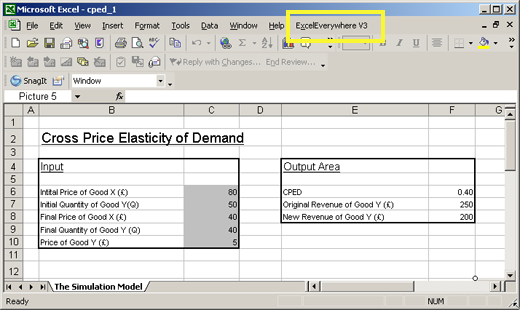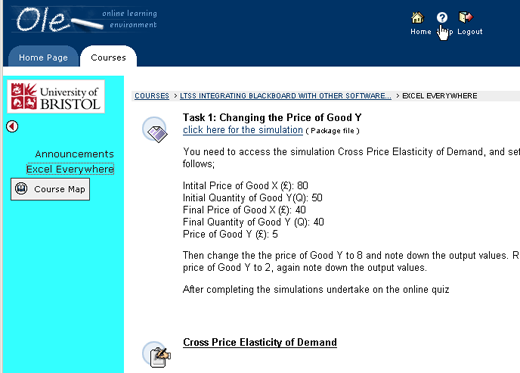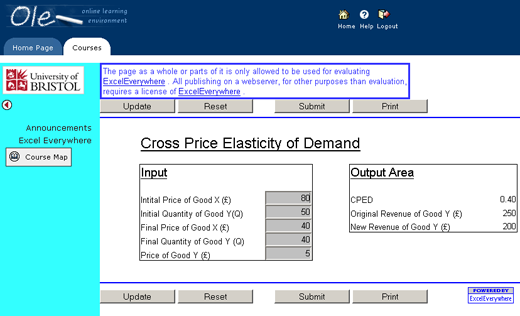Andy Ramsden
Learning Technology Support Service, University of Bristol
andy.ramsden at bris.ac.uk Reproduced with permission from interact (University of Bristol Learning Technology Support Service) issue 31. Published October 2005
In one of my previous incarnations I was employed as a Research Officer for Biz/ed and authored the Virtual Learning Arcade. The experiences I gained in that role combined with the current role as a Learning Technology Adviser in the LTSS have led to me identifying three important points with respect to educators using simulations in teaching and learning.
- Educators and students appreciate the learning benefits associated with using simulations
- Educators prefer to either develop their own or adapt existing simulations to meet their specific educational needs
- Educators tend to have little web authoring experience or significant resources for developing online simulations
A strategy often adopted to overcome these issues has been to develop the simulation in Microsoft Excel and then make it available through a virtual learning environment (VLE). An obvious drawback to this approach is accessibility. An alternative would be to use a software package called Spreadsheet Converter (formerly known as "Excel Everywhere").
Once installed, the software acts as an add-on to Microsoft Excel. It allows you to create the simulation in Excel then convert it into a web page that maintains the full functionality. This web page can simply be uploaded to your web space or your VLE course. The beauty is, you do not need any authoring skills and for the web it is significantly more accessible than using Excel.
The following screen shots illustrate the Excel spreadsheet and the output as web page.
In this example I've hosted the simulation in a Blackboard course and embedded it within a learning sequence. The student needs to run the simulation with some prescribed inputs and then uses the simulation output within an online formative assessment.
Screenshot 1: Creating the simulation (note the new button on the menu)

Screenshot 2: Developing an online activity around a simulation

Screenshot 3: The converted Excel spreadsheet as an online simulation

Apart from the ease of use and it's relatively cheap cost (US$99), for me Spreadsheet Converter offers two other advantages. Firstly, students can submit their simulation runs to the lecturer via email through clicking the submit button (see Screenshot 3). Secondly, it is one of the few authoring packages that produce an output that works elegantly on handheld devices.
If you are looking for further ideas on using spreadsheets in education then indulge me further on this trip down memory lane, and visit "Using spreadsheets to promote student understanding" available from Biz/ed.

